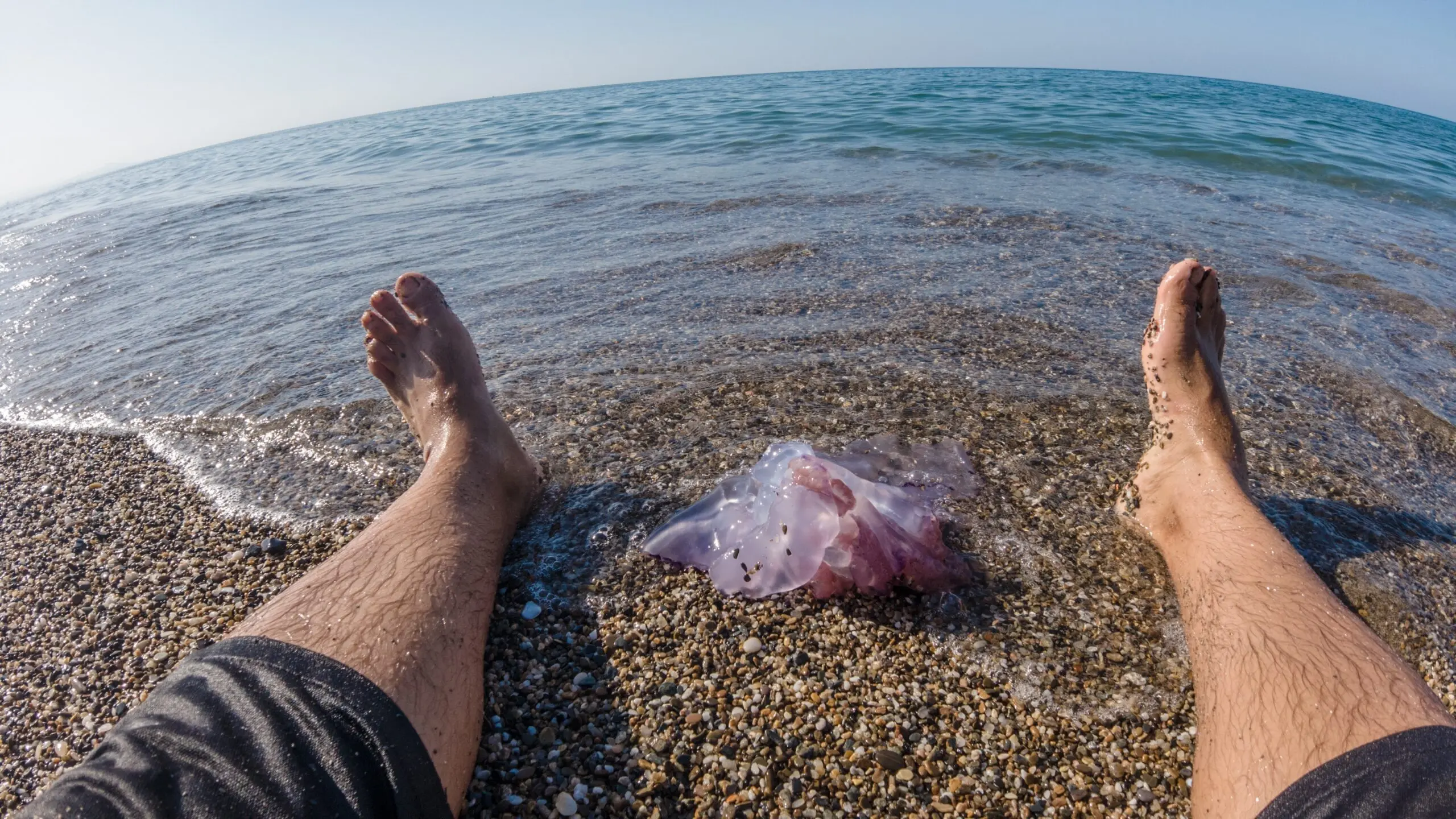
Although it may seem surprising, jellyfish are growing more widespread, even in lakes and rivers (known as freshwater jellyfish). Therefore, it is crucial to understand what to do if a jellyfish stings your foot. Learn the symptoms of this injury and how to treat it in the article below.
Symptoms of a jellyfish sting on the foot
You are having a great time playing in the water when you get what seems like an electric jolt to the foot. Most likely, you were stung by a jellyfish, which happens when the stinging cells on its tentacles come into touch with your skin.
The sting victim will typically experience a burning sensation of varying intensity after the first severe pain has subsided, followed by itching and red skin sores (pimples or patches).
Other symptoms, such as headaches, dizziness, nausea, or trouble breathing, may occasionally arise after being stung by a jellyfish, especially if the person is allergic.
Although they can seem insignificant, these stings should not be ignored and need to be treated at once.
Foot treatments for jellyfish stings
There are a number of things to do if you detect a jellyfish sting. When you first leave the water, gently wipe away any tentacle residue still on your foot’s flesh. Next, thoroughly rinse with seawater, being careful not to rub (particularly not with clear water!). If you happen to have vinegar on hand, it could be a good idea to mix it with some water before applying it to the sting.
When you get home, use a sterile compress and an antiseptic solution to clean the wound. Dab softly. You might use an antihistamine cream to soothe the reaction if necessary.
Be careful; if the sting is still painful after 48 hours or if the wound’s state does not improve, you must act swiftly to see a doctor who can properly diagnose and treat your foot.
What not to do when treating a jellyfish sting
There are a few myths regarding the treatment of a jellyfish sting that have made their way into popular culture. It’s a good idea to revisit these false beliefs that will certainly not help your foot heal. You should be aware that one of the most prevalent examples is that you should not urinate on the wound because doing so could infect it. Furthermore, avoid rinsing your wounded foot with fresh water because doing so will just make the pain worse by causing the venom to be released.
Other helpful tips include not putting the wound in your mouth to suck out the venom, not putting alcohol on the affected area, not making an incision in the wound, and not applying a compression bandage.
Other foot injuries at the beach
There are other risks of foot injury at the beach beyond jellyfish stings. It is possible to cut yourself on a shell, a sea urchin, a spiny-finned snapper, or glass fragments in the sand. In each of these cases, it is crucial to remove the foreign object (either on your own or with a doctor’s help), clean the wound, and avoid swimming for a while as you wait for the wound to heal.
Another risk that is often overlooked is the burning of the arch of the foot on the sand or sunburn on top of the foot.
It might be a good idea to wear beach shoes to prevent all these unpleasant problems. Last but not least, remember to use a high-protection factor sunscreen on the skin on your feet.
Never disregard a jellyfish sting on your foot
A jellyfish sting can be unpleasant and leave unsightly scars even though it is typically not serious. Nonetheless, it is critical to appropriately manage this kind of injury and, if necessary, seek competent medical assistance.
Have you been stung by a jellyfish, and are you still in pain, or does the area seem to be getting worse? To get the help you need, book a visit with a FootNetwork podiatrist right away.

